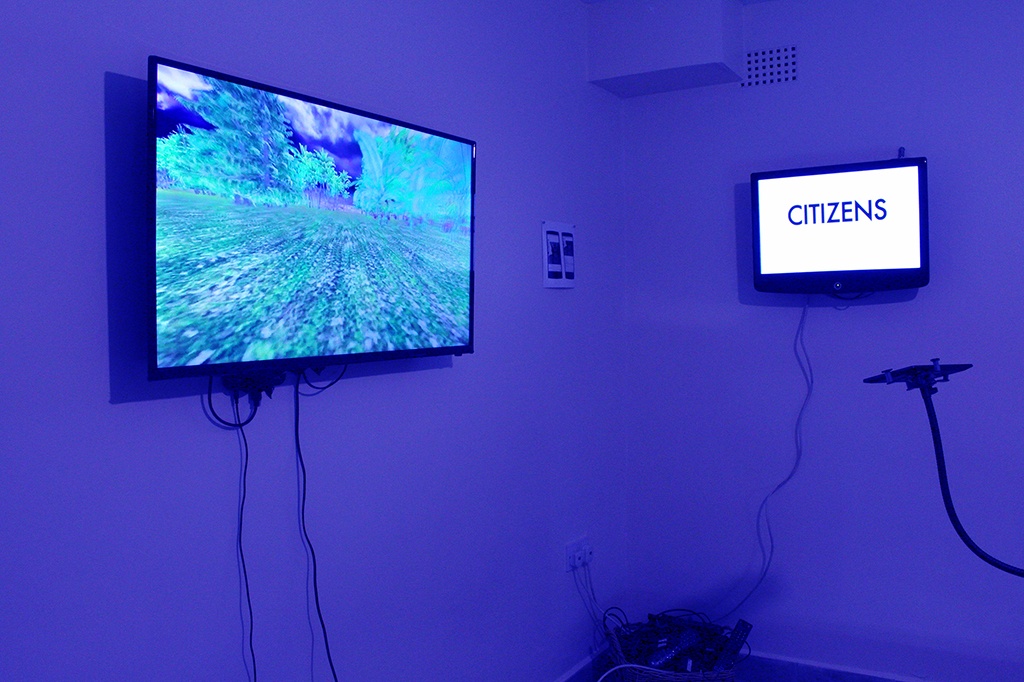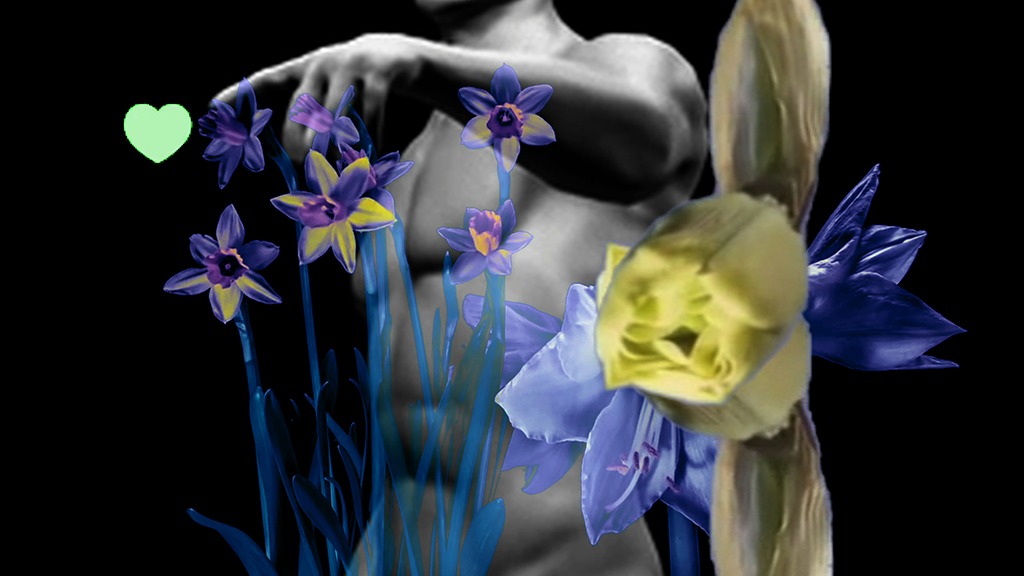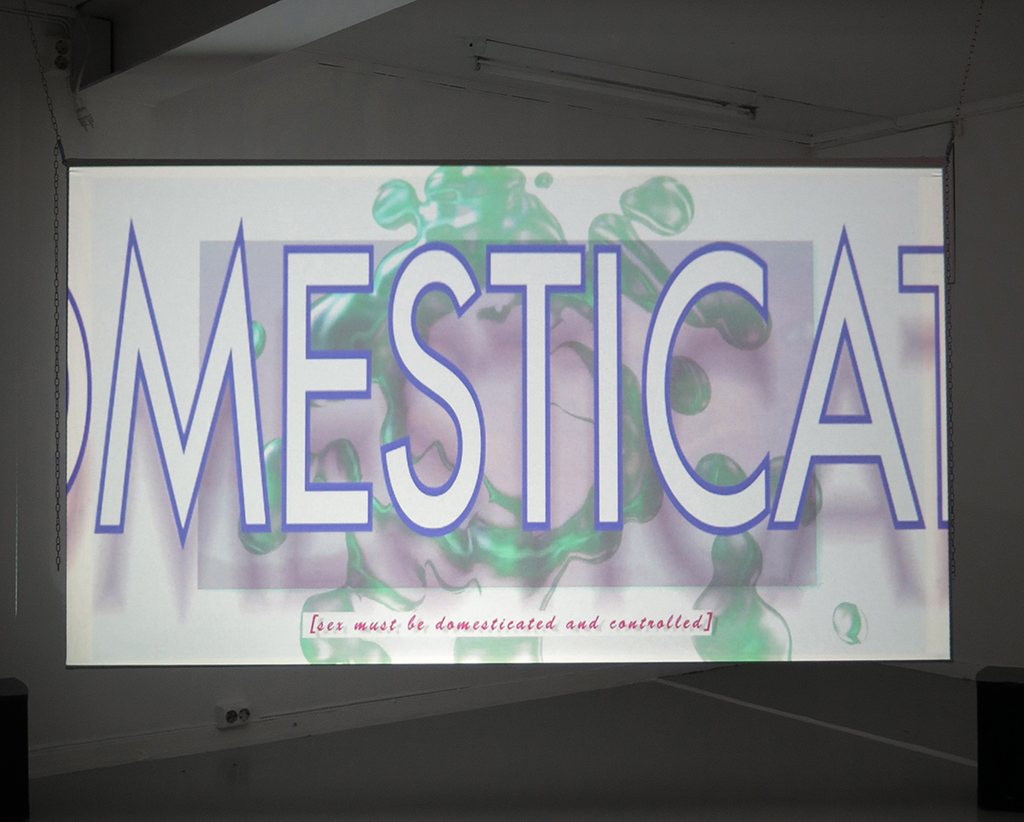Heather Jones: I understand that you’re a Finnish artist, and that you studied at both Konstfack and The Royal Institute of Art in Stockholm. Can you tell us a bit more about your background and how you first came to be involved in art?
Camilla Edström Ödemark: I’m originally from Åland, a Swedish-speaking island in the south-west archipelago of Finland. I grew up in a non-cultural middle class home and from an early age was encouraged to draw and paint, both of which I seemed to have a talent for and strong motivation to do. I somehow knew that I’d end up an artist, I don’t think I ever had to choose. And coming from a home with high ethics of work and an appreciation for the solid and tangible, me applying for art school was met with a skepticism that fueled my motivation even more. I’m stubborn, always have been, and on top of that art challenged me on so many levels I couldn’t just quit when things got tough. Today art is so intertwined with who I am and how I think and relate to my surroundings; I wouldn’t know who I’d be without it. I feel I was put in this field by encouraging teachers and adults, and I just started to grow into it. Maybe it’s a bit like a really good match on Tinder. A mutual super-like.
HJ: Much of your work revolves around issues of belonging, immigration, and alienation, and these themes are particularly relevant in our current socio-political climate. One work specifically, Decadent Breakfast, focuses on an Afghan refugee’s hunger strike outside the Finnish Parliament in Helsinki when denied asylum. When and why did you first begin making work dealing with dealing with these topics?
CEÖ: I’m mainly interested in the construction of identity, and I’ve been approaching this from different aspects ever since my time at Konstfack. The starting point was the Satumaa videos I made for my graduation show. In three different videos I tried to figure out how Finnish national identity works when it comes to inclusion and exclusion. This all came from my own personal experiences as a Swedish-speaking Finn in a political climate that had undergone serious changes from the rise of the True Finns (far-right populist party). To speak Swedish as a Finn had become suspicious; my identity was being questioned.
On top of this, I was living in the suburbs of Stockholm at the time and experienced the awkwardness of passing as a Swede by people who had more connections to the Swedish identity than I had. I once went to my local kiosk to buy cigarettes, and as always I chatted for a while with the cashier. He asked my how long I’ve been living there, and I replied that it had now been 2,5 years. And he said ”it’s great that the Swedes are moving here”. Now, my suburb had a bad reputation from media, something I never experienced myself, and the cashier spoke broken Swedish. All of this got stuck in my head: what was said between the lines, the positioning of me and him in relation to each other. Suddenly it was apparent to me, that even though I have a normative body, I can never rid myself from the connotations and history of what it represents. I was made the good missionary in a second. I still get shivers from thinking about it. It is still a great motivator for my work.
HJ: Your experiences of questioning your personal identity are obviously then related to the artwork that you make – do you relate to the Swedes, the Finns, other immigrant groups, or do you exist somewhere in between, part of but not wholly included in any of the groups? Does the way that you position yourself in relation to your identity effect how audiences view your work, both in Sweden and internationally?
CEÖ: I don’t fully identify with any group – I can’t see how that would be possible. I don’t believe in anything essentially Finnish/Swedish/European. I’m only tracing the stories and fantasies of such an essence in my work. I navigate in the space in-between; sometimes I call myself a Swede, sometimes a Finn. I have found myself intentionally seeking out this in-between-ness. I find it constructive to my work, and I use it to try to get an understanding for experiences that I lack, but might cause. As for how I position myself in relation to my identity, and how it affects the audiences, I use myself as a representation for a norm, a group identity, and I am deliberately trying to open up a self-critical discussion within this group/these groups.
HJ: A recent work, Alien Nation, shown at Studio 17 last year again explored issues of colonization, identity, and ‘the alien’ in a less direct way through science fiction tropes. Why did science fiction seem like an apt metaphor for these ideas?
CEÖ: First of all, I love sci-fi, horror and fantasy. They are all genres that depict scenarios where we don’t have a given pattern of reaction. You can always prepare for the real threats, like, ”what would I do if I slipped in the shower and broke my leg”? But can we honestly prepare for the unreal? Can we even picture it? To me, all of these scenarios in sci-fi are really about something else. We can’t really think of something we’ve never ever encountered before, or been through. We need to have certain reference points to orient ourselves.
So to come up with a story depicting the unreal, we use our deepest fears in the real world. Look at zombie movies, for example. The genre has gone through several changes since the first black and white flicks in the early 1900´s. In the beginning it was the fear of the exoticized voodoo practice, and the colonial fear of the black body that originated the zombie. But we’ve also seen a zombie outburst on the screens, originating from nuclear fallout, medical engineering and mutated pandemics, to name a few. These different points of reference have of course been present in the real world at the time the movies were made. So to give the fantasies of these genres meaning is, for me at least, to poke around in the subconscious fears of the collective mind.
And as always, I ask myself, who is telling the story and to whom? As for sci-fi, the genre has been criticized for being homogenous and eurocentric. It’s mainly written by white Westerners, and the main characters are ever so often white. This goes for a lot of genres, of course, but this critique has lead to the Afrofuturist counter-genre. I’m definitely not the first one to approach Western identity through science fiction, and as I started researching for the video essay I was reading the Mundane Afrofuturist Manifesto by artist Martine Syms. In the line of Afrofuturism, Syms argues that the alien in sci-fi is really a eurocentric modification of the black body. So I started to go through some classics, like the Alien tetralogy (franchise) and Signs (M Night Shamaylan), trying to find out what the reference points of the different narratives were. I found that colonialism was very present, either if it was a group of space travelers from Earth colonizing space, such as in Alien, or if it was Earth being invaded by extraterrestrial forces, such as in Signs. Two stories: the continuos missionary exploration and exploitation of the unknown, or the fear of being invaded and objectified in the same manner that the West always objectified the Third World. So sci-fi became the main battle field of my video Alien Nation, where the battle is being fought over the prerogative of identity in a game of inclusion and exclusion.

HJ: Interesting – is there a subsection of sci-fi that uses these same tropes against the white, western hegemony?
CEÖ: Yes, that would be Afrofuturism. Of course it is even more than that, embracing the history, experiences and knowledge of others than white normative bodies, but I’ve used the perspectives of the genré as a way of getting an outside glimpse of myself and the setup of my identity.
HJ: You seem to take a very strong personal stance in your work. Do you consider yourself a political artist? What role do you think artists have in our current political debates?
CEÖ: I consider myself a political artist the same way I consider myself a political person. Dealing with questions of how we construct and perform identity, it is impossible not to consider the power structures and hierarchies that are intertwined with what identities we are given an opportunity to perform. For me it would be unforgivable not to critically analyze what part I myself am playing, where I find myself in these hierarchies, and where the crowd I am showing my stuff to is positioned. We’re quite a homogenous group. And to talk about this is always political, because you need to have an explanation to why you possess this specific position, which of course leads to several different questions also in need of answers.
Just the fact that I’m an artist says something about the economy of my background. I couldn’t do this if I had to support others than myself, and it is not expected of me to do so. I’m not even sure I could be doing this if I didn’t know that my family could step in and cover for me in a financial crisis. It’s not pretty, but it’s the truth. I’ve given up so much personal monetary safety and what I’ve gotten in return is cultural capital. But it’s a currency which only has a value in specific spaces and groups, to which I have immediate access. This makes it worth it for me. Anyhow, I don’t think that artists specifically have more responsibilities or a more valuable role in current political debate. But I do think that we as citizens and fellow humans have a responsibility to engage in the society we use and that in return uses us, and to question ourselves and the spaces we possess. We need to formulate for ourselves why we have chosen to be a part of these communities, and then take action to follow these principles.
HJ: Although you’ve created work in a variety of materials, you’re most notably recognized for your video works. What is the appeal of this medium for you?
CEÖ: I love video with all my heart. There’s so much to it, there wouldn´t be time to talk about every aspect. I love the play of subjectivity, how the narrative is laid out; who is the narrator, from who’s perspective do we experience the story? I’m also weak for cinematic tricks, how to force the viewer into a specific feeling. Generic pictures, clichés and epic music, everything that gives you the goosebumps in the darkness of a movie theatre. It’s interesting how gestures of emotion are taught through movies, and how we play them out in reality. It becomes a collective library of fictive realness, a consensual agreement, maybe even a violence on our subjectivities.
I play a lot with this when I edit my videos. I like to think that force, propaganda and violence are present when I work, because I experience identity-making as violent in the sense that it excludes. This is especially true in these times of self-affirmation and -fulfillment, filter bubbles, ”alternative facts” and super individualism. I also experience that spoken language never really covers what needs to be said. It never really reaches inside of you, it can’t grasp the emotions you want to communicate. Otherwise there wouldn’t be misunderstandings. Moving images can be a more full way of communicating, a spoken language supported by pictures and music. In my opinion, the speculative and associative must be included in the intellectual. These things are maybe considered intuitive knowledge, based in the body. I want the body and its experiences to have a more visible and prominent part of intellectualism. For me, video and the language of moving images does that.

HJ: You’re a current resident at AIR Sandnes. Can you tell us a little bit about your time here in the Stavanger area and what you are working while here?
CEÖ: I came here with the intention not to do another video. But I am of weak character, it seems, so I immediately started to write the manuscript for a new work. Alongside this, I’ve been experimenting with silicone, trying to find out how to approach sculpture. It’s a whole other way of thinking, and I’m still struggling! The project I’ve been working on focuses on a ride back to Malmö after a wet night out in Copenhagen. To get back to Sweden you need to show your ID nowadays, and standing in front of the border police at the train station I of course realized I had forgotten my drivers license at home. The police told us to take a cab, because the custom police have more advanced systems to control people in my situation. So we did. In the end, nothing really happened. It was quite an anticlimax, I never had to show my ID or even give an explanation. It was so obvious that I was not the one the controls concern. It’s so easy to forget these things, when the protests and demonstrations cling out. For me the controls are a small inconvenience while it can be a matter of the only chance for a better life, or even life or death, to others. I am already an accepted part of the system, being white and communicating these different codes of the cultural middle-class. I’m safe to enter anywhere. The project is really about this, about communicating these codes in order to reflect the others within the group, the safety and bestiality of the homogenous community. As a parallell, my company that night, a man I’m falling madly in love with, is also communicating these same codes, and I’m picking them up. We’re confirming each others identities in a way that is almost mirror-like. This, to me, is also a sort of border control. You need the right code to get in.
HJ: And finally, do you have any upcoming exhibitions or projects in progress that you can share with us?
CEÖ: I will be showing my progress here at AIR Sandnes 16th of February. It’s really been amazing here, people are very open, engaged and clever, so I’m hoping to get a lot of questions to push me further in this project. Thereafter I will be spending one month as a resident artist at Hordalands Kunstsenter in Bergen. I will be writing the manuscript for a new video that will be focusing on the longing for objectification, mainstream-ification of BDSM in popular culture and the commodification of the consumer society. Hopefully I will get some time off for love and relations after that, and then I’ll start researching for a bigger project that will span throughout 2017. I will go back to investigate the Finnish national identity in relation to the Finnish Civil War, revisionism and the new experiences of distant wars that are continuously added to the collective mind of Finland through immigration. I am to show this project at Third Space Gallery in the beginning of 2018, the centennial of the Civil War. Shortly, I have a lot of work ahead of me, and I couldn’t be happier!
Camilla Edström Ödemark (b.1985 Åland) is a Malmö-based visual and media artist working with the issue of (national) identity. Mixing contemporary debate, politics, and popular culture with historic events, propaganda, and myths Edström Ödemark investigates what it means to be Finnish, European, Western etc. Edström Ödemark’s works have recently been showed at Spriten Kunsthall (NO), Galleri CC (SE), and Third Space Gallery (FIN).
For more information, please visit: www.edstromodemark.com


